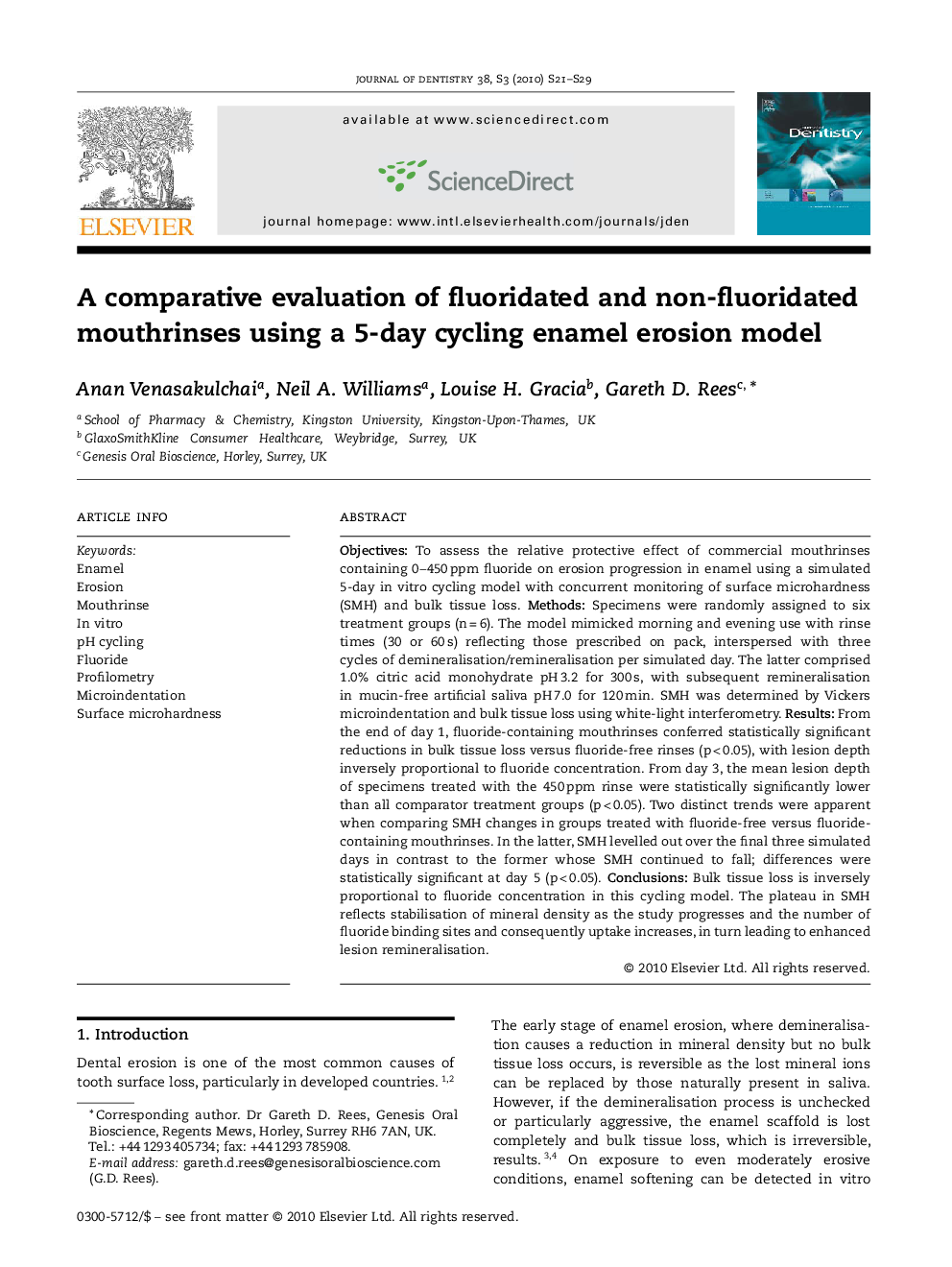| کد مقاله | کد نشریه | سال انتشار | مقاله انگلیسی | نسخه تمام متن |
|---|---|---|---|---|
| 3145342 | 1197068 | 2010 | 9 صفحه PDF | دانلود رایگان |

ObjectivesTo assess the relative protective effect of commercial mouthrinses containing 0-450ppm fluoride on erosion progression in enamel using a simulated 5-day in vitro cycling model with concurrent monitoring of surface microhardness (SMH) and bulk tissue loss.MethodsSpecimens were randomly assigned to six treatment groups (n=6). The model mimicked morning and evening use with rinse times (30 or 60s) reflecting those prescribed on pack, interspersed with three cycles of demineralisation/remineralisation per simulated day. The latter comprised 1.0% citric acid monohydrate pH3.2 for 300s, with subsequent remineralisation in mucin-free artificial saliva pH7.0 for 120min. SMH was determined by Vickers microindentation and bulk tissue loss using white-light interferometry.ResultsFrom the end of day 1, fluoride-containing mouthrinses conferred statistically significant reductions in bulk tissue loss versus fluoride-free rinses (p<0.05), with lesion depth inversely proportional to fluoride concentration. From day 3, the mean lesion depth of specimens treated with the 450 ppm rinse were statistically significantly lower than all comparator treatment groups (p<0.05). Two distinct trends were apparent when comparing SMH changes in groups treated with fluoride-free versus fluoride-containing mouthrinses. In the latter, SMH levelled out over the final three simulated days in contrast to the former whose SMH continued to fall; differences were statistically significant at day 5 (p< 0.05).ConclusionsBulk tissue loss is inversely proportional to fluoride concentration in this cycling model. The plateau in SMH reflects stabilisation of mineral density as the study progresses and the number of fluoride binding sites and consequently uptake increases, in turn leading to enhanced lesion remineralisation.
Journal: Journal of Dentistry - Volume 38, Supplement 3, November 2010, Pages S21-S29